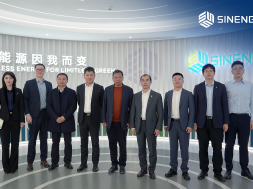
In Short : With rooftop solar capacity on government buildings saturated, Chandigarh is exploring installing solar panels over its 220 km cycle track network. CREST will assess feasibility, focusing on design, performance, and aesthetics. The initiative supports the city’s goal of 100% renewable energy by 2030 and complements broader clean energy efforts, including EV infrastructure and solar audits.
In Detail : Chandigarh is looking to expand its solar energy capacity by exploring the installation of solar panels over its 220-kilometre-long cycle track network. This move comes after the city reached saturation in rooftop solar installations on government buildings, prompting officials to look for new and innovative spaces for solar deployment.
The Chandigarh Renewable Energy and Science & Technology Promotion Society (CREST) will lead a detailed feasibility study to determine where and how solar panels can be installed above the cycle tracks. The study will consider technical, structural, and aesthetic aspects to ensure that the installations are both effective and visually acceptable in an urban setting.
Officials are evaluating whether to use overhead sheds to support the solar panels or explore alternative architectural solutions. The goal is to utilize the open linear spaces along cycle tracks without disrupting cycling infrastructure, while also contributing meaningfully to the city’s renewable energy production.
Chandigarh has already implemented several successful solar projects, including rooftop systems on public buildings and solar installations on vacant land, waterworks, and parking areas. However, with government rooftops fully utilized, new solar potential must be found elsewhere to meet the city’s sustainability goals.
At a recent governing body meeting chaired by the UT Chief Secretary, CREST officials reviewed progress and outlined steps to expand solar initiatives. The administration also announced third-party audits for existing solar systems that are more than five years old to ensure efficiency and maintenance standards.
This new direction aligns with Chandigarh’s broader target of achieving 100% renewable energy generation by 2030. The solar panel initiative over cycle tracks, along with projects like EV charging infrastructure and solar-powered urban mobility, reflects the city’s commitment to integrated and sustainable urban development.












